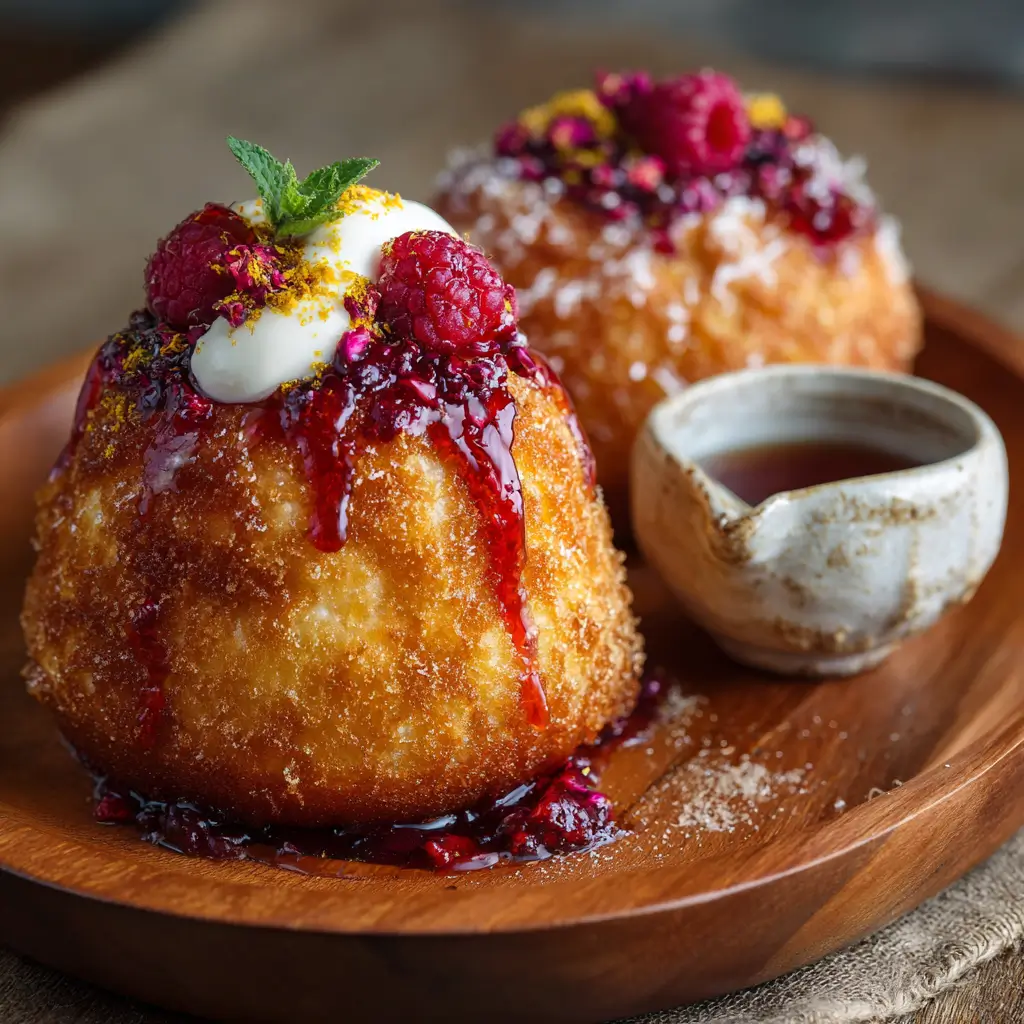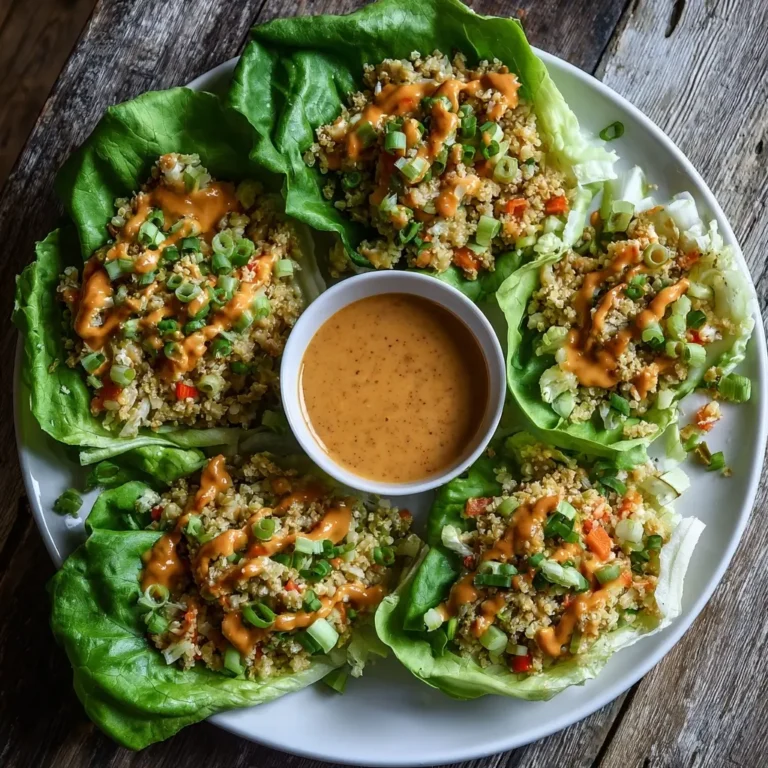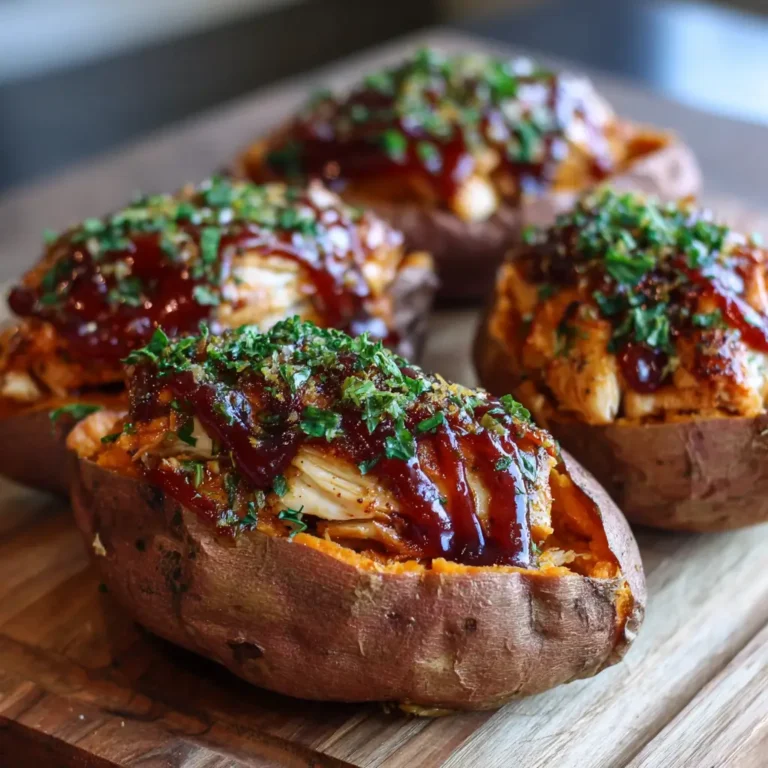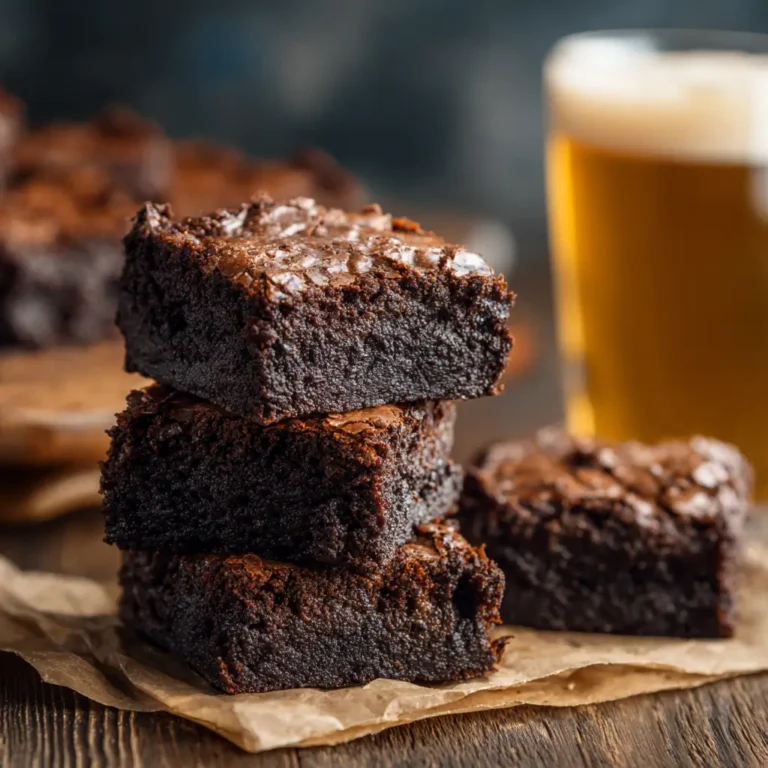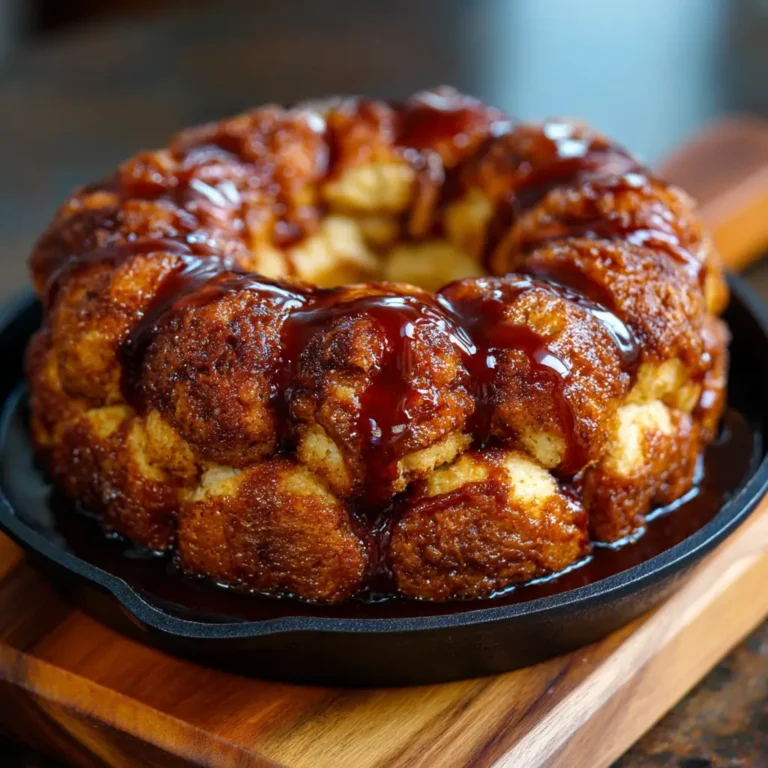Rum Baba
Rum Baba: A Luscious, Boozy Delight Steeped in History
The Rum Baba is a decadent dessert that marries the richness of yeast-leavened cake with the bold flavor of rum syrup. Known for its moist, spongy texture and intoxicating aroma, this dessert has captivated palates across Europe and beyond for centuries. Whether served plain, filled with cream, or accompanied by fresh fruit, the Rum Baba stands as a testament to the artistry of European patisserie.
The History of Rum Baba
The origins of the Rum Baba trace back to Eastern Europe, with roots entwined in Polish, French, and Italian culinary traditions. The dessert is believed to have evolved from the kuglóf, a Central European baba or babka—a tall, cylindrical yeast cake often baked in a fluted mold. The earliest version, known simply as “baba” (from the Slavic word for “grandmother” or “old woman”), was a humble bread-like cake flavored with dried fruits.
The transformation into the Rum Baba began in 18th-century Poland when King Stanisław I Leszczyński, exiled to the Duchy of Lorraine, reportedly found the original baba too dry. He requested it be soaked in vin de Malaga, a sweet fortified wine. This innovation laid the foundation for alcohol-soaked desserts. Later, in Paris during the 19th century, French chefs refined the recipe, replacing wine with dark rum and adding whipped cream fillings. The name “Baba au Rhum” became popularized in elite Parisian pâtisseries, symbolizing luxury and indulgence.
By the early 20th century, the Rum Baba had spread throughout Italy, where it became especially beloved in Naples. Italian variations often feature a richer rum infusion and are sometimes layered with pastry cream or zabaglione. Today, the Rum Baba remains a staple in fine bakeries across Europe and is celebrated for its elegant balance of sweetness, alcohol, and soft crumb.
Ingredients Breakdown
To create an authentic Rum Baba, each ingredient plays a crucial role in building its signature texture and flavor profile. Here’s a detailed breakdown:
- Flour (All-Purpose or Bread Flour): Provides the structural base. Bread flour gives a slightly chewier texture due to higher protein content.
- Active Dry Yeast: Essential for leavening, giving the cake its light, airy crumb. Must be properly proofed to ensure rise.
- Butter (Unsalted): Adds richness and tenderness. Melted butter in the dough enhances moisture, while softened butter ensures even mixing.
- Eggs: Contribute to structure, color, and emulsification. They help bind the ingredients and add softness.
- Sugar: Sweetens the dough and feeds the yeast during fermentation. Granulated sugar is typical, though some recipes use caster sugar for finer texture.
- Milk: Warmed milk activates the yeast and adds moisture. Whole milk is preferred for its fat content.
- Raisins or Candied Fruit: Traditional inclusions that provide bursts of sweetness and chewiness. Soaked in rum beforehand for extra flavor.
- Dark Rum: The soul of the dessert. Used both in the soaking syrup and sometimes in the dough. Aged rums offer deeper caramel and vanilla notes.
- Vanilla Extract: Enhances overall flavor complexity with warm, floral undertones.
- Salt: Balances sweetness and strengthens gluten structure.
- Water & Sugar (for Syrup): Forms the rum-infused soak that defines the dessert’s moistness.
- Whipped Cream or Pastry Cream (Optional): Used for filling in modern presentations, adding luxurious contrast.
Step-by-Step Recipe for Classic Rum Baba
Ingredients
- 500g (3 ¾ cups) all-purpose flour
- 7g (1 packet) active dry yeast
- 120ml (½ cup) warm whole milk (110°F/43°C)
- 3 large eggs, room temperature
- 80g (⅓ cup) granulated sugar
- 80g (⅓ cup) unsalted butter, melted and cooled
- 1 tsp salt
- 1 tsp vanilla extract
- 60g (½ cup) raisins or candied orange peel
- 60ml (¼ cup) dark rum (for soaking fruit)
- Butter for greasing molds
Rum Syrup
- 400g (2 cups) granulated sugar
- 400ml (1 ¾ cups) water
- 120ml (½ cup) dark rum
Optional Fillings & Garnishes
- 200ml heavy cream, whipped
- 100g pastry cream (crème pâtissière)
- Fresh berries (strawberries, raspberries)
- Powdered sugar for dusting
- Mint leaves for decoration
Directions
- Soak the Fruits: In a small bowl, combine raisins or candied peel with 60ml of dark rum. Let macerate for at least 2 hours, preferably overnight, to plump and infuse.
- Activate the Yeast: In a small bowl, mix warm milk with 1 teaspoon of sugar and sprinkle yeast on top. Let sit for 5–10 minutes until frothy, indicating the yeast is active.
- Mix the Dough: In a large mixing bowl or stand mixer fitted with a dough hook, combine flour, remaining sugar, and salt. Add the activated yeast mixture, eggs, melted butter, and vanilla. Mix on low speed until combined, then increase to medium and knead for 8–10 minutes until smooth, elastic, and slightly sticky.
- Incorporate Fruits: Drain excess rum from the soaked fruits (reserve liquid for syrup). Gently fold fruits into the dough until evenly distributed.
- First Rise: Place dough in a lightly oiled bowl, cover with a damp cloth or plastic wrap, and let rise in a warm place for 1–1.5 hours, or until doubled in size.
- Shape the Babas: Generously grease individual baba molds (or use muffin tins lined with paper cups). Punch down the risen dough and divide into 10–12 portions. Shape each into a tight ball and place into molds. Cover and let proof for another 30–45 minutes until puffy.
- Bake: Preheat oven to 180°C (350°F). Bake babas for 20–25 minutes until golden brown and a skewer inserted comes out clean. Cool in molds for 5 minutes, then transfer to a wire rack.
- Prepare the Rum Syrup: While babas bake, combine sugar and water in a saucepan. Bring to a boil, stirring until sugar dissolves. Reduce heat and simmer for 5 minutes. Remove from heat and stir in 120ml of dark rum. Optionally, add the reserved rum from soaking fruits for intensified flavor.
- Soak the Babas: While still warm, place babas in a shallow dish. Spoon hot rum syrup over them, turning gently to ensure full saturation. Allow them to cool completely while absorbing the syrup. For deeper flavor, refrigerate overnight in the syrup.
- Fill and Serve (Optional): Once soaked, split babas horizontally and fill with whipped cream or pastry cream. Replace the top and garnish with berries, powdered sugar, and mint. Alternatively, serve unfilled with cream on the side.
Tips for Perfect Rum Baba
- Yeast Activation: Always test your yeast in warm (not hot) milk. Temperatures above 120°F will kill the yeast, leading to dense cakes.
- Dough Consistency: The dough should be soft and slightly tacky but not overly sticky. Adjust with small amounts of flour or milk if needed.
- Proofing Environment: For consistent rise, place dough in a turned-off oven with a bowl of hot water to create a warm, humid environment.
- Even Soaking: Use a pastry brush to coat babas evenly with syrup, or submerge them briefly using tongs for uniform absorption.
- Rum Quality Matters: Choose a high-quality aged dark rum like Myers’s, Appleton Estate, or Havana Club for the best flavor depth.
- Storage: Store soaked babas in an airtight container in the refrigerator for up to 5 days. The flavor deepens over time.
- Serving Temperature: Serve chilled or at room temperature—never hot, as heat can overpower the delicate balance of flavors.
Variations and Customizations
The Rum Baba is highly adaptable, allowing for creative interpretations based on regional tastes and dietary needs:
- Chocolate Rum Baba: Add cocoa powder to the dough and drizzle with chocolate ganache before serving.
- Lemon or Orange Baba: Replace rum with Grand Marnier or Cointreau and add citrus zest to the dough for a bright, zesty twist.
- Savory-Sweet Baba: Pair with mascarpone and figs for an elegant appetizer or brunch option.
- Mini Baba Shots: Make bite-sized versions in espresso cups, layering with cream and fruit compote for cocktail parties.
- Gluten-Free Version: Substitute flour with a gluten-free blend containing xanthan gum for structure. Results may vary; expect a denser crumb.
- Vegan Rum Baba: Replace eggs with flax eggs (1 tbsp ground flax + 3 tbsp water per egg), use plant-based milk and butter, and opt for vegan sugar. Note: rising may be slower.
- Alcohol-Free Option: Replace rum with strong brewed tea, coffee, or fruit juice mixed with rum extract for flavor without intoxication.
- Layered Baba Charlotte: Stack multiple babas with whipped cream and jam to create a show-stopping centerpiece dessert.
Health Considerations and Nutritional Value
While undeniably delicious, the Rum Baba is a calorie-dense dessert due to its sugar, butter, and alcohol content. Here’s a general nutritional estimate per serving (1 medium baba, ~100g):
- Calories: 320–380 kcal
- Carbohydrates: 50–60g (mostly from sugar and refined flour)
- Fat: 10–14g (primarily saturated from butter and cream)
- Protein: 6–8g
- Alcohol: 2–4% ABV depending on soaking level
Health Notes:
- The high glycemic index from refined sugars and alcohol makes this dessert less suitable for diabetics or those managing blood sugar.
- Gluten-sensitive individuals should avoid traditional recipes unless modified.
- Due to alcohol content, it is not recommended for children, pregnant women, or those avoiding alcohol.
- Portion control is advised. One small baba is sufficient for most palates given its richness.
- To make it slightly healthier, reduce sugar in syrup by 25%, use whole wheat pastry flour blend, and skip the cream filling.
Frequently Asked Questions (FAQ)
Q: Can I make Rum Baba ahead of time?
A: Yes! In fact, they taste better after 24 hours as the rum flavor deepens. Store in the refrigerator in a sealed container with extra syrup.
Q: Why are my babas dry?
A: Likely causes include under-proofing, insufficient syrup, or over-baking. Ensure babas are warm when soaking and use enough syrup to fully saturate.
Q: Can I freeze Rum Baba?
A: Yes, but only before soaking. Freeze unsoaked baked babas for up to 2 months. Thaw, warm slightly, then soak in syrup. Freezing after soaking may compromise texture.
Q: What’s the difference between Baba au Rhum and Savarin?
A: Both are yeast cakes soaked in syrup, but Savarin is typically ring-shaped, richer in butter, and often infused with orange liqueur instead of rum. Savarins rarely contain dried fruit.
Q: Can I use light rum instead of dark?
A: Yes, but dark rum offers a deeper, more complex flavor with molasses and oak notes. Light rum is milder and works if you prefer a subtler taste.
Q: My dough didn’t rise. What went wrong?
A: Possible reasons: expired yeast, milk too hot/cold, lack of warmth during proofing, or too much salt inhibiting yeast. Always proof yeast first to confirm activity.
Q: Are there non-alcoholic syrups I can use?
A: Absolutely. Simmer water with sugar, lemon peel, vanilla, and a splash of rum extract. Or use grape juice and cinnamon for a festive alternative.
Summary
The Rum Baba is a timeless dessert that blends rich, yeasted cake with deeply aromatic rum syrup, offering a luxurious experience rooted in European tradition. From its royal origins to modern gourmet interpretations, it remains a symbol of indulgence, craftsmanship, and culinary evolution.
